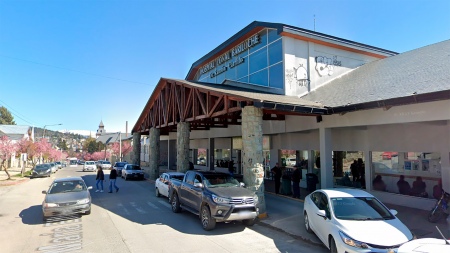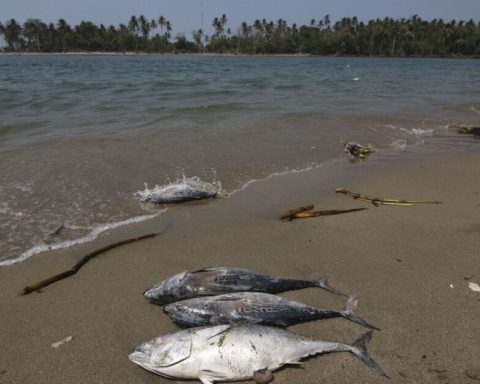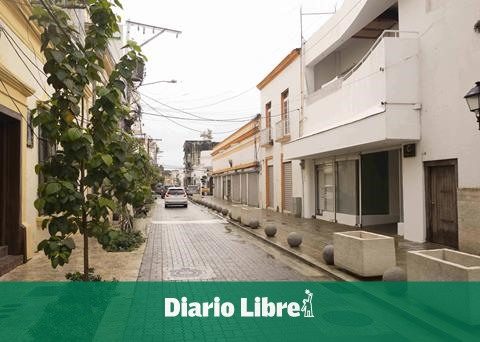A 35-year-old woman had to be rescued after the avalanche of water and stones that occurred on the path to the Jakob Refuge, in the city of San Carlos de Bariloche, Rio Negro. She suffered the amputation of part of one leg as a result of the serious injuries injuries, local hospital authorities reported this Friday.
The young woman remains in intensive care with respiratory assistance waiting for her general clinical picture to improve.
The woman and her partner, originally from Buenos Aires, were touring the area when this Thursday they were surprised and swept away by an avalanche. as a consequence of the strong storms that affect the Andean zone.
She was transferred by helicopter from the place where the accident occurred and then by ambulance, from the National Parks dry dock to the Ramón Carrillo area hospital in the Patagonian lake city.
The Mayor of the Nahuel Huapi National Park, Horacio Paradelatold Télam the rescue operation carried out: “The situation had to do with a landslide of mud and stone on the path as a result of the rains.”
“This led to the complaint of one of the people involved who was able to call and warn of the situation,” he added.
“Based on this call, the rescue operation was activated with personnel from the National Parks, the Bariloche Relief Commission and the local Andean Club,” said the official.
“He also intervened National Gendarmerie. Luckily, people were found and a helicopter from the National Fire Management Service was used to carry out a quick evacuation so that they could quickly reach the hospital,” explained the Parks representative.
“The person who presented the most seriousness had a polytrauma to one of his legs that unfortunately led to the amputation of part of it,” he lamented.
operational
Regarding the operation in these cases of accidents, Paradela indicated that, “once we receive the communication, a description of the incident is made, an operation is deployed that can be carried out directly by Parks or sometimes with the National Gendarmerie.”
Regarding the warnings before the storms, he maintained that, “on Wednesday a report was issued that warned about these torrential and electrical storms.”
“The statement is issued by the National Meteorological Service and that we replicate and warn of the phenomenon by virtue of the alert, in this case yellow, but the trail or area is not closed,” explained the Parks reference.
For their part, hospital spokesmen reported today that the injured woman suffered a serious injury with “exposed fractures of the tibia and fibula,” which required trauma surgery and amputation of part of her member.
“His prognosis is reserved, but because he is young it is expected that he can evolve favorably,” they assured the hospital.
The first complaint received by the rescuers indicated that the woman was missing, although she was later found with serious injuries to one of her legs.
A rescue operation was immediately coordinated with an aircraft from the National Fire Management Plan that expedited its diversion, due to the congestion of the terrestrial arteries.
They rescued two climbers in Aconcagua
two climbers foreigna 50 year old native of United States with symptoms of cerebral edema, and another residing in Germany with frostbite on their fingers, they had to be rescued by rescue patrol personnel when they tried to climb Mount Aconcagua.
As reported this Friday by the Mountain aid personnel “the German citizen had reached the Nido de Cóndores area, at about 5,500 meters above sea level, and had to be evacuated because he had already frozen blue fingers.”
The athlete was rescued by patrol personnel who assisted him, medicated him, and then evacuated him by helicopter to the Horcones area, closest to the base.
The other rescue occurred with a 50-year-old climber from the United States, who had already reached 6,000 meters in his climb when “he began to present symptoms of cerebral edema and had to be evacuated and descended with oxygen and a stretcher,” they explained. .
Stephen Dietz, 50, had a very low blood saturation, had almost no reaction and all the symptoms of cerebral edema caused by high altitude.
The Altura Medical Service, together with the Rescue Patrol, guides and the helicopter carried out the entire operation to bring him down to Horcones, where an ambulance took him to a care center.
Already in Horcones, an ambulance was ready to assist them and immediately transfer them to a hospital.
Aconcagua is the highest hill in the western hemisphere with 6,962 meters, and this season is the season for ascents, although the weather is very cold and adverse.
The hill protects the sector of the Andes mountain range where it reaches the highest height in America, with numerous peaks that exceed 5,000 meters.


















